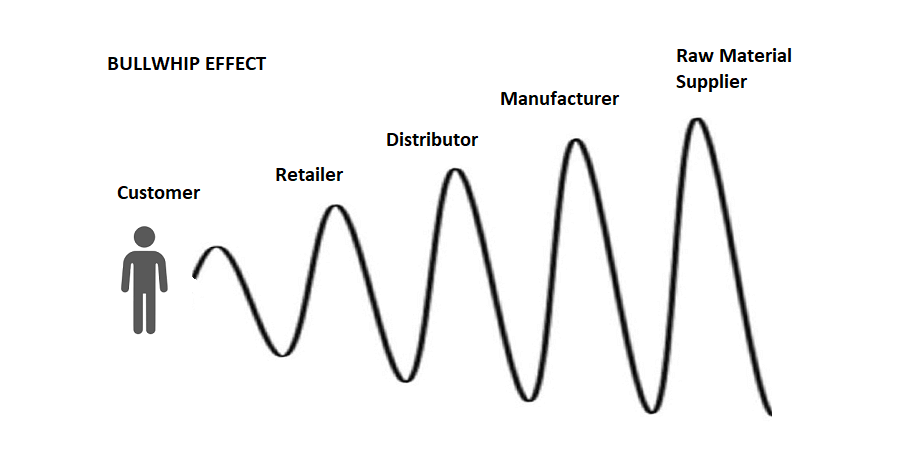
The bullwhip effect is a concept of inventory fluctuations or inefficient asset allocation as a result of demand changes as you move further up the supply chain.
As such, upstream manufacturers often experience a decrease in forecast accuracy as the buffer increases between the customer and the manufacturer.
Benefits of minimizing the bullwhip effect
- Every industry has its own unique supply chain, inventory placements, and complexities.
- After analyzing the bullwhip effect and implementing improvement steps, inventories in the range of 10 to 30 percent can be reduced
- Around 15 to 35 percent reduction in instances of stock out situations and missed customer orders can be achieved.
Read: Inventory Management Concepts
Methods to minimize Bullwhip Effect
A detailed stock analysis of the inventory points from stores to raw material suppliers will help uncover idle excess inventories
Improve the inventory planning process
- Inventory planning is carefully done with historical trends for seasonal demand, forward-looking demand, new product launches and discontinuation of older
- products. Safety stock settings and min-max stock range of each inventory point need to be reviewed and periodically adjusted.
- Regular reporting and early warning system need to be implemented for major deviations from the set inventory norms.
Improve the raw material planning process
- Raw material planning needs to be directly linked to the production plan.
- Production plan needs to be released sufficiently in advance to respect the general purchasing lead times.
- Consolidation to a smaller vendor base from a larger vendor base, for similar raw material, will improve the flexibility and reliability of the supplies.
- This will result in lower raw material inventories.
Collaboration and information sharing between managers
- There might be some inter-conflicting targets between purchasing managers, production managers, logistics managers and sales managers.
- Giving more weight to common company objectives in performance evaluation will improve collaboration between different departments.
- Also providing regular and structured inter-departmental meetings will improve information sharing and decision-making process.
Optimize the minimum order quantity and offer stable pricing
- Certain products have high minimum order quantity for end customers resulting in overall high gaps between subsequent orders.
- Lowering the minimum order quantity to an optimal level will help provide create smoother order patterns.
- Stable pricing throughout the year instead of frequent promotional offers and discounts may also create stable and predictable demand.
Also Read:
BATheories.com is managed by a group of educators from Mumbai. We also manage the website AcademicsHQ.com. Our panel includes experienced professionals and lecturers with a background in management. BATheories is where we talk about the various business theories and models for BA (Business Administration) students.